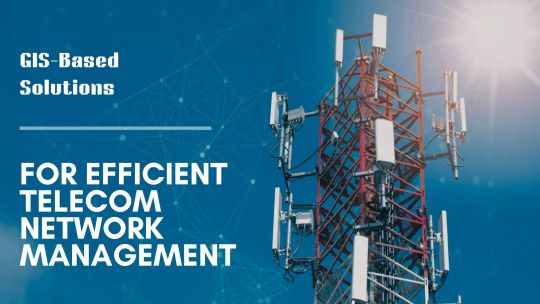#Telecom analytics services
Explore tagged Tumblr posts
Text
Telecom and Technology Analytics Services In Hyderabad - Innodatatics

Analytics services for telecom and technology provide complete solutions designed to satisfy the changing needs of businesses in the digital age. These services, which use cutting-edge data analytics techniques, offer priceless insights into market trends, network performance, and client behavior. Telecom & Technology analytics services help businesses make strategic decisions, improve customer experience, and optimize network infrastructure through predictive modeling, machine learning algorithms, and data visualization tools. These services enable telecom and tech firms to remain ahead of the competition, adjust to shifting market dynamics, and open up new revenue streams by utilizing the power of big data. Telecom & Technology analytics services are essential for promoting innovation and long-term, sustainable growth in the digital ecosystem. They achieve this by spotting cost-saving opportunities and forecasting future demand patterns.
#Telecom and Technology analytics services In Innodatatics#Telecom and Technology analytics services In Bangalore#Telecom and Technology#Telecom and Technology Services#Analytics Services#Innodatatics Services#Innodatatics analytics services#Telecom analytics services#Telecom and Technology analytics services#Telecom and Technology analytics services in Hyderabad#Telecom & Technology services#Telecom & Technology services in Bangalore#Telecom & Technology services in Hyderabad#Innodatatics Internship in Hyderabad#Telecom & Technology services solutions#Telecom & Technology#Telecom & Technology analytics services
0 notes
Text
GIS-Based Solutions for Efficient Telecom Network Management
The telecom industry is undergoing rapid transformation, driven by the increasing demand for seamless connectivity, efficient network management, and improved customer experience. As networks become more complex, the need for innovative solutions to manage these networks has never been greater. Geographic Information System (GIS)-based solutions have emerged as a game-changer in the telecom sector, offering a robust platform for managing, analyzing, and visualizing network data. This blog explores how GIS-based solutions can revolutionize telecom network management, ensuring efficiency and reliability.
Learn more at https://www.cyberswift.com/blog/telecom-utility-solution-a-brief-overview/

#gis for 5g network planning#telecom network monitoring with gis#gis for telecom service coverage analysis#gis enabled telecom site selection#gis mapping for telecom connectivity#gis solutions for managing telecom utilities#role of gis in telecom infrastructure planning#telecom utility gis software for asset management#gis technology for fiber optic network design#geospatial analytics for telecom network optimization#telecom asset management system#gis telecom utility software#fiber optic network mapping#gis based telecom service optimization#telecom network visualization tools#utility network analysis in telecom#geospatial solutions for telecom utilities
0 notes
Text
The Generative AI Revolution: Transforming Industries with Brillio
The realm of artificial intelligence is experiencing a paradigm shift with the emergence of generative AI. Unlike traditional AI models focused on analyzing existing data, generative AI takes a leap forward by creating entirely new content. The generative ai technology unlocks a future brimming with possibilities across diverse industries. Let's read about the transformative power of generative AI in various sectors:
1. Healthcare Industry:
AI for Network Optimization: Generative AI can optimize healthcare networks by predicting patient flow, resource allocation, etc. This translates to streamlined operations, improved efficiency, and potentially reduced wait times.
Generative AI for Life Sciences & Pharma: Imagine accelerating drug discovery by generating new molecule structures with desired properties. Generative AI can analyze vast datasets to identify potential drug candidates, saving valuable time and resources in the pharmaceutical research and development process.
Patient Experience Redefined: Generative AI can personalize patient communication and education. Imagine chatbots that provide tailored guidance based on a patient's medical history or generate realistic simulations for medical training.
Future of AI in Healthcare: Generative AI has the potential to revolutionize disease diagnosis and treatment plans by creating synthetic patient data for anonymized medical research and personalized drug development based on individual genetic profiles.
2. Retail Industry:
Advanced Analytics with Generative AI: Retailers can leverage generative AI to analyze customer behavior and predict future trends. This allows for targeted marketing campaigns, optimized product placement based on customer preferences, and even the generation of personalized product recommendations.
AI Retail Merchandising: Imagine creating a virtual storefront that dynamically adjusts based on customer demographics and real-time buying patterns. Generative AI can optimize product assortments, recommend complementary items, and predict optimal pricing strategies.
Demystifying Customer Experience: Generative AI can analyze customer feedback and social media data to identify emerging trends and potential areas of improvement in the customer journey. This empowers retailers to take proactive steps to enhance customer satisfaction and loyalty.

3. Finance Industry:
Generative AI in Banking: Generative AI can streamline loan application processes by automatically generating personalized loan offers and risk assessments. This reduces processing time and improves customer service efficiency.
4. Technology Industry:
Generative AI for Software Testing: Imagine automating the creation of large-scale test datasets for various software functionalities. Generative AI can expedite the testing process, identify potential vulnerabilities more effectively, and contribute to faster software releases.
Generative AI for Hi-Tech: This technology can accelerate innovation in various high-tech fields by creating novel designs for microchips, materials, or even generating code snippets to enhance existing software functionalities.
Generative AI for Telecom: Generative AI can optimize network performance by predicting potential obstruction and generating data patterns to simulate network traffic scenarios. This allows telecom companies to proactively maintain and improve network efficiency.
5. Generative AI Beyond Industries:
GenAI Powered Search Engine: Imagine a search engine that understands context and intent, generating relevant and personalized results tailored to your specific needs. This eliminates the need to sift through mountains of irrelevant information, enhancing the overall search experience.
Product Engineering with Generative AI: Design teams can leverage generative AI to create new product prototypes, explore innovative design possibilities, and accelerate the product development cycle.
Machine Learning with Generative AI: Generative AI can be used to create synthetic training data for machine learning models, leading to improved accuracy and enhanced efficiency.
Global Data Studio with Generative AI: Imagine generating realistic and anonymized datasets for data analysis purposes. This empowers researchers, businesses, and organizations to unlock insights from data while preserving privacy.
6. Learning & Development with Generative AI:
L&D Shares with Generative AI: This technology can create realistic simulations and personalized training modules tailored to individual learning styles and skill gaps. Generative AI can personalize the learning experience, fostering deeper engagement and knowledge retention.
HFS Generative AI: Generative AI can be used to personalize learning experiences for employees in the human resources and financial services sector. This technology can create tailored training programs for onboarding, compliance training, and skill development.
7. Generative AI for AIOps:
AIOps (Artificial Intelligence for IT Operations) utilizes AI to automate and optimize IT infrastructure management. Generative AI can further enhance this process by predicting potential IT issues before they occur, generating synthetic data for simulating scenarios, and optimizing remediation strategies.
Conclusion:
The potential of generative AI is vast, with its applications continuously expanding across industries. As research and development progress, we can expect even more groundbreaking advancements that will reshape the way we live, work, and interact with technology.
Reference- https://articlescad.com/the-generative-ai-revolution-transforming-industries-with-brillio-231268.html
#google generative ai services#ai for network optimization#generative ai for life sciences#generative ai in pharma#generative ai in banking#generative ai in software testing#ai technology in healthcare#future of ai in healthcare#advanced analytics in retail#ai retail merchandising#generative ai for telecom#generative ai for hi-tech#generative ai for retail#learn demystifying customer experience#generative ai for healthcare#product engineering services with Genai#accelerate application modernization#patient experience with generative ai#genai powered search engine#machine learning solution with ai#global data studio with gen ai#l&d shares with gen ai technology#hfs generative ai#generative ai for aiops
0 notes
Text
Eye 1968-michaelharrelljr.com's Private Multinational [PM] Government Telecommunications Project [GTP] Domain @ quantumharrelltelecom.tech
WELCOME BACK HOME IMMORTAL [HIM] U.S. MILITARY KING SOLOMON-MICHAEL HARRELL, JR.™

i.b.monk [ibm.com] mode [i’m] tech [IT] steelecartel.com @ quantumharrelltech.ca.gov

quantumharrelltech.ca.gov Outside Our 1921steelecartel.tech MACHINE SKY Firmament Domain DOME… OVER Earth [Qi]

1968-michaelharrelljr.com ANU GOLDEN 9 ETHER [AGE] kingtutdna.com Genetic LUZ Clone KING OF KINGS LORD OF LORDS… Under the Shadow [U.S.] of Invisible DEATH [I.D.] LANGUAGE RITUALS in Old America [MU ATLANTIS]

HALLO

Ngingathanda ukukhuluma noMichael?

yon moman tanpri

בטוח

prendi il messaggio per favore

ok

snälla Översätt

Mahadsanid

© 1698-2223 quantumharrelltech.com - ALL The_Octagon_(Egypt) DotCom [D.C.] defense.gov Department Domain Communication [D.C.] Rights Reserved @ quantumharrelltech.ca.gov
#telecom industry#telecom infrastructure#u.s. michael harrell#quantumharrelltech#king tut#mu:13#kemet#harrelltut#o michael#quantumharrelltut#telecom services market#telecom operators#telecom service assurance#automation#security#analytics#compliance#software#department of defense#the pentagon#chatgpt#discord chat#just chatting#text me
1 note
·
View note
Text
Can Open Source Integration Services Speed Up Response Time in Legacy Systems?
Legacy systems are still a key part of essential business operations in industries like banking, logistics, telecom, and manufacturing. However, as these systems get older, they become less efficient—slowing down processes, creating isolated data, and driving up maintenance costs. To stay competitive, many companies are looking for ways to modernize without fully replacing their existing systems. One effective solution is open-source integration, which is already delivering clear business results.

Why Faster Response Time Matters
System response time has a direct impact on business performance. According to a 2024 IDC report, improving system response by just 1.5 seconds led to a 22% increase in user productivity and a 16% rise in transaction completion rates. This means increased revenue, customer satisfaction as well as scalability in industries where time is of great essence.
Open-source integration is prominent in this case. It can minimize latency, enhance data flow and make process automation easier by allowing easier communication between legacy systems and more modern applications. This makes the systems more responsive and quick.
Key Business Benefits of Open-Source Integration
Lower Operational Costs
Open-source tools like Apache Camel and Mule eliminate the need for costly software licenses. A 2024 study by Red Hat showed that companies using open-source integration reduced their IT operating costs by up to 30% within the first year.
Real-Time Data Processing
Traditional legacy systems often depend on delayed, batch-processing methods. With open-source platforms using event-driven tools such as Kafka and RabbitMQ, businesses can achieve real-time messaging and decision-making—improving responsiveness in areas like order fulfillment and inventory updates.
Faster Deployment Cycles: Open-source integration supports modular, container-based deployment. The 2025 GitHub Developer Report found that organizations using containerized open-source integrations shortened deployment times by 43% on average. This accelerates updates and allows faster rollout of new services.
Scalable Integration Without Major Overhauls
Open-source frameworks allow businesses to scale specific parts of their integration stack without modifying the core legacy systems. This flexibility enables growth and upgrades without downtime or the cost of a full system rebuild.
Industry Use Cases with High Impact
Banking
Integrating open-source solutions enhances transaction processing speed and improves fraud detection by linking legacy banking systems with modern analytics tools.
Telecom
Customer service becomes more responsive by synchronizing data across CRM, billing, and support systems in real time.
Manufacturing
Real-time integration with ERP platforms improves production tracking and inventory visibility across multiple facilities.
Why Organizations Outsource Open-Source Integration
Most internal IT teams lack skills and do not have sufficient resources to manage open-source integration in a secure and efficient manner. Businesses can also guarantee trouble-free setup and support as well as improved system performance by outsourcing to established providers. Top open-source integration service providers like Suma Soft, Red Hat Integration, Talend, TIBCO (Flogo Project), and Hitachi Vantara offer customized solutions. These help improve system speed, simplify daily operations, and support digital upgrades—without the high cost of replacing existing systems.
2 notes
·
View notes
Text
Top 10 IT Software and Consulting Companies in Lucknow
Top 10 IT Software and Consulting Companies in Lucknow
Lucknow, the City of Nawabs, is steadily emerging as a significant hub for IT software and consulting services. With a growing talent pool and increasing digital adoption across industries, several companies are making their mark in this vibrant ecosystem. If you're looking for top-notch IT solutions in Lucknow, here's a list of 10 prominent players:
1. Tata Consultancy Services (TCS)
A global IT giant with a significant presence in Lucknow, TCS offers a comprehensive suite of IT services and consulting. Their expertise ranges from application development and maintenance to enterprise solutions, cloud services, and digital transformation initiatives. TCS is known for its strong delivery capabilities, global reach, and deep industry knowledge.
2. HCLTech
Another major player in the IT services domain, HCLTech has a well-established center in Lucknow. They provide a wide array of services, including software development, infrastructure management, digital process operations, and engineering and R&D services. HCLTech is recognized for its focus on innovation and its ability to deliver end-to-end IT solutions.
3. Wipro
Wipro, a leading global information technology, consulting, and business process services company, also has operations in Lucknow. They offer a broad spectrum of services, including IT consulting, application development, infrastructure services, and business process outsourcing. Wipro is known for its strong client relationships and its commitment to delivering value through technology.
4. Capgemini
Capgemini is a multinational IT services and consulting company with a presence in Lucknow. They provide services across consulting, technology, and outsourcing domains. Capgemini's expertise includes application development, infrastructure management, cybersecurity, and digital transformation services.
5. Augurs Innovation Pvt Ltd
Augurs Innovation Pvt Ltd is a prominent IT software and consulting company based in Lucknow. Known for its cutting-edge software development and robust consulting services, they offer expertise in custom software development, web and mobile application development, cloud solutions, data analytics, and IT consulting. Their client-centric approach and commitment to delivering high-quality, innovative solutions have earned them a strong reputation in the local market.
6. Tech Mahindra
Tech Mahindra, a part of the Mahindra Group, is a leading provider of digital transformation, consulting, and business re-engineering services 1 and solutions. Their Lucknow center contributes to their global delivery network, offering services in areas like software development, network services, and customer experience management.
7. NIIT Technologies (Coforge)
Coforge, formerly known as NIIT Technologies, is a global digital services and solutions company with a presence in Lucknow. They specialize in providing services to industries such as banking and financial services, insurance, travel and transportation, and healthcare. Their offerings include application development, cloud services, and digital process automation.
8. Infosys BPM
While primarily focused on business process management, Infosys BPM in Lucknow also provides IT-enabled services and solutions. They leverage technology to optimize business processes and deliver enhanced customer experiences. Their services include finance and accounting, customer service, and supply chain management.
9. Concentrix
Concentrix is a global customer experience (CX) solutions company with a significant operation in Lucknow. While their core focus is on customer engagement, they also provide technology solutions and support to enhance CX delivery.
10. Ericsson Global Services Pvt Ltd
Ericsson's presence in Lucknow is primarily focused on providing telecom-related IT services and solutions. They contribute to the company's global services delivery capabilities, offering expertise in areas like network management, software development for telecom infrastructure, and support services.
This list showcases a selection of the leading IT software and consulting companies operating in Lucknow. The city's dynamic growth in the technology sector continues to foster innovation and attract businesses seeking reliable IT partners. When making a decision, consider your specific requirements and evaluate these companies based on their expertise, experience, and client feedback.
3 notes
·
View notes
Text
Top Global Solution IT Service Providers in New Delhi

New Delhi, the bustling capital of India, has emerged as a major hub for the IT industry. With a growing demand for digital transformation, businesses are increasingly relying on IT service providers to streamline their operations, enhance security, and develop innovative solutions. Here’s a look at some of the Top global IT service providers in New Delhi that are leading the way in technology solutions and support.
Tata Consultancy Services (TCS)
TCS is one of the largest IT service providers in India and has a strong presence in New Delhi. The company specializes in IT consulting, cloud solutions, artificial intelligence, and cybersecurity. With decades of experience and a global presence, TCS provides cutting-edge solutions for enterprises across industries.
HCL Technologies
Headquartered in Noida, close to New Delhi, HCL Technologies is a global IT services company known for its expertise in software development, IT infrastructure management, and digital transformation solutions. The company has a strong clientele across banking, healthcare, and manufacturing sectors.
Wipro Limited
Wipro is another IT giant with a significant footprint in New Delhi. It offers services in cloud computing, data analytics, business process outsourcing (BPO), and cybersecurity. Wipro's commitment to innovation and sustainability has made it a preferred IT partner for enterprises worldwide.
Infosys
Infosys is a leader in IT services and consulting, providing businesses with digital transformation solutions, AI-driven insights, and enterprise cloud services. The company has a strong presence in the capital and supports industries such as finance, retail, and healthcare.
Tech Mahindra
Tech Mahindra, part of the Mahindra Group, is a well-established IT service provider in New Delhi. The company focuses on telecom, IT consulting, and digital transformation services. It also offers specialized solutions in AI, blockchain, and IoT for businesses looking to innovate.
NIIT Technologies (Coforge)
Now known as Coforge, NIIT Technologies is a renowned IT service provider in New Delhi, specializing in digital services, cloud computing, and application development. The company serves industries like travel, banking, and insurance with customized IT solutions.
Cognizant
Cognizant has a strong presence in New Delhi, providing IT solutions in digital engineering, AI, and data analytics. The company caters to industries such as healthcare, retail, and finance, helping businesses achieve digital growth.
IBM India
IBM India is a trusted name in IT services, offering cloud solutions, AI, cybersecurity, and blockchain technology. With an established base in New Delhi, IBM supports enterprises in enhancing their IT infrastructure and business processes.
Dell Technologies
Dell provides IT consulting, hardware solutions, cloud computing, and enterprise-grade cybersecurity services. Businesses in New Delhi rely on Dell for data storage, virtualization, and IT infrastructure solutions.
OrangeMantra
A fast-growing IT solutions provider based in Gurugram, near New Delhi, OrangeMantra offers web development, mobile app development, AI-based solutions, and e-commerce platforms. The company caters to startups and established enterprises looking for customized IT services.
2 notes
·
View notes
Text
How social media shapes the future of digital marketing
In today's digital world, social media is key to most marketing. It affects their effectiveness. It was once just a site to choose friends. Now, it's a valuable tool for companies. They can interact with customers and the public and promote their products. You must know how social media affects your ads to beat your competition.
Social media’s role in digital marketing
Facebook, Instagram, LinkedIn, and Twitter are not just social media platforms for networking. They give an organization a chance to build a brand online and reach its target audience. When used well, companies can create great campaigns that communicate their brand.
If you are in Ahmedabad, hire a local digital marketing company. They can align your social media strategies with a complete marketing plan. This will help you achieve your goals.
Building brand awareness
Social media presence enables businesses to build brand image to reach customers consistently. Posting articles, videos, and stories raises awareness of your brand. It also keeps your brand relevant to the audience.
In competitive industries, we are the best social media marketing agency in Ahmedabad. We can leverage the brand by targeting the right audience with ads.
Enhancing customer engagement
First of all, social media is an example of the two-way communication model. It’s no longer about “telling people what we want them to know”; it’s about relationships. Polls, DMs, and comments let brands talk to customers and gather info.
If it's vital to engage the target group, the Ahmedabad agency can create content that appeals to them. It will be both relevant and engaging.
Driving traffic and conversions
Social media can drive a lot of traffic to your site. Businesses can use blogging, ads, and product publicity. They can reach customers and guide them through the buying process.
A good strategy makes social media a must for digital marketing. It can boost your results. So, use it to succeed.
Measuring results effectively
Analytical methods can see, in real time, the impact of a social media campaign. Engagement rates, impressions, and click-through rates are other KPIs. They provide key insights on what to fix and what to improve.
It is crucial to involve specialists. Their insights will improve your long-term digital marketing.
Staying ahead in a competitive market
Today, in telecom, firms and traders must be competitive and open to new trends. Social media can boost your brand. It fosters creativity, innovation, and new ideas.
If used well, your social media can be a key tool. It will help grow and promote your business.
Conclusion:
Sleek Communication gives you the best social media services, which are key in shaping marketing. It boosts brand awareness and customer relations, delivering real value. A balanced approach helps businesses reach their target market and promote their causes. It also helps them meet their marketing goals. Our analysis shows that social media can help businesses. It can keep them relevant, help them catch up, and build lasting ties in a fast-changing world. Sleek Communication can help your business use social media. It will connect you with your audience and drive success.

#best digital marketing company#digital marketing agency near me#social media marketing agency for small business#best social media marketing agency in ahmedabad#best branding agencies in ahmedabad
2 notes
·
View notes
Text
BPO Companies: How to Choose the Best BPO Company in India?
Today, business process outsourcing has become a growing trend. With so much data and consumers to manage, corporate confidence in Best BPO Company has grown over the years. India's IT and BPO services sector has grown rapidly since its inception in the mid-1990s and today has a turnover of US$37.6 billion. The Indian BPO market has grown due to economies of scale, reduced business risk, cost advantages, improved utilization, and superior experience. Among competitors such as Australia, China, the Philippines, and Ireland, India is now the world's leading hub for the consumption of BPO services. India's immense popularity as a global outsourcing destination is due to the country's low labor costs and a large pool of skilled and skilled workers gave an opportunity to companies like Ascent BPO to provide better services at reasonable prices.
But since many organizations in India offer quality data entry services, companies only need to choose the best ones after they have done their homework. Look on our website to learn how to choose the Best BPO Company like us.
What is business process deploying or outsourcing (BPO)?
Before we get started, we want to give our audience an overview of what a BPO is. Business process outsourcing companies provide services that allow companies to focus on their core business. Let us consider this problem in detail. You may not have the time or resources for a separate organization that you can trust to handle other aspects of your business. These other aspects can be anything from call center operations, marketing, SEO, finance to human resource activities. The sky is the limit. Now that business process outsourcing has sparked some interest, let's explain what to look for in the Best BPO company.
Some Best BPO company are given below:
Tata Consulting Services:
Tata Consulting Services (TCS) is the second-best outsourcing firm in India. TCS is an organization based in Mumbai in Bangalore. TCS provides trading services, platform solutions, analytics, information services, and more. TCS has more than 400,000 employees in India and thousands of employees in other parts of the world. Tata Advisory Services will generate revenue of approximately $23 billion in 2020.
Wipro:
Wipro is a leading multinational company providing IT services, consulting, and business operations. They serve their clients by applying their expertise in cognitive computing, hyper-automation, robotics, cloud, analytics, and emerging technologies.
Ascent BPO
Ascent BPO manages multiple streams such as data entry services, data entry projects, data entry processing, web research, financial accounting, and call center services. Get the best outsourcing service at the lowest possible price here. Wide access to major Indian metropolitan areas such as Delhi and Mumbai, as well as other major cities in India such as Bangalore, Chennai, and Kolkata.
First source solution:
Firstsource Solution is a leading provider of customized Business Process Management (BPM) services to the banking and financial, customer service, telecom, media, and health industries. It is headquartered in Mumbai, and also has operations in the United States, United Kingdom, and the Philippines. In addition, Firstsource Solutions recently won Gold and Silver Awards at the UK Complaint Management Awards 2020.
UrbanTimer:
UrbanTimer is a VA company based in Kolkata. Believing that your experience will be "the best in your business," the company offers administrative support, customer service, content creation, graphic design, project management, QuickBooks services, startups, and more.
Professional BPO Qualifications: What To Look For?
Companies considering working with a BPO company should know what to look for in potential partners. If you're wondering how to find the most qualified BPO company like Ascent BPO, a few key qualifications are good indicators that you're doing business with experienced professionals:
1. Proven experience:
Your business processes should not be executed by ordinary people. One of the most important qualifications for Best BPO company is proven experience in the industry. Excellent customer testimonials show that your business has been treated similarly.
2. Specialized Services:
We offer a variety of functions and processes, and specialized services demonstrate expertise. If you're wondering how to find the most qualified BPO company, it's a good sign to find a company that specializes in a field similar to yours.
3. Reliability and Security:
Because Ascent BPO handles confidential and proprietary company information, you want to ensure that your BPO company's data security measures are in place. If you can tell that a BPO company values ??reliability and security, you know your data is safe.
4. Focus on Metrics:
Being data-driven is one of the most important skills a BPO company should look for. A metrics-driven BPO company tests and shows clients how it is performing.
5. Transparency:
Transparency is an important factor if you want to know how to find the most qualified BPO company. If a BPO company doesn't seem honest or transparent, you won't be satisfied with their work.
You should browse through the above-given details about BPO companies to find the most qualified BPO company. These elements will help you determine which BPO company is the best fit for your business.
Resource:https://www.ascentbpo.com/bpo-companies
Useful Links:
2 notes
·
View notes
Text
5 Trends in ICT
Exploring the 5 ICT Trends Shaping the Future The Information and Communication Technology (ICT) landscape is evolving at a rapid pace, driven by advancements that are transforming how we live, work, and interact. Here are five key trends in ICT that are making a significant impact:
1. Convergence of Technologies
Technologies are merging into integrated systems, like smart devices that combine communication, media, and internet functions into one seamless tool. This trend enhances user experience and drives innovation across various sectors
Convergence technologies merge different systems, like smartphones combining communication and computing, smart homes using IoT, telemedicine linking healthcare with telecom, AR headsets overlaying digital on reality, and electric vehicles integrating AI and renewable energy.
2. Social Media
Social media platforms are central to modern communication and marketing, offering real-time interaction and advanced engagement tools. New features and analytics are making these platforms more powerful for personal and business use.
Social media examples linked to ICT trends include Facebook with cloud computing, TikTok using AI for personalized content, Instagram focusing on mobile technology, LinkedIn applying big data analytics, and YouTube leading in video streaming.
3. Mobile Technologies
Mobile technology is advancing with faster 5G networks and more sophisticated devices, transforming how we use smartphones and tablets. These improvements enable new applications and services, enhancing connectivity and user experiences.
Mobile technologies tied to ICT trends include 5G for high-speed connectivity, mobile payment apps in fintech, wearables linked to IoT, AR apps like Pokémon GO, and mobile cloud storage services like Google Drive.
4. Assistive Media
Assistive media technologies improve accessibility for people with disabilities, including tools like screen readers and voice recognition software. These innovations ensure that digital environments are navigable for everyone, promoting inclusivity.
Assistive media examples linked to ICT trends include screen readers for accessibility, AI-driven voice assistants, speech-to-text software using NLP, eye-tracking devices for HCI, and closed captioning on video platforms for digital media accessibility.
5. Cloud Computing
Cloud computing allows for scalable and flexible data storage and application hosting on remote servers. This trend supports software-as-a-service (SaaS) models and drives advancements in data analytics, cybersecurity, and collaborative tools.
Cloud computing examples related to ICT trends include AWS for IaaS, Google Drive for cloud storage, Microsoft Azure for PaaS, Salesforce for SaaS, and Dropbox for file synchronization.

Submitted by: Van Dexter G. Tirado
3 notes
·
View notes
Text
Empowering Digital Innovation: Microlent Systems' Comprehensive Web Development Services

Microlent Systems
In an era dominated by digital transformation, businesses are relentlessly pursuing innovation to stay ahead in their respective markets. Amid this digital race, Microlent Systems emerges as a beacon of technological advancement and a pioneer in web development services. With a robust portfolio that spans web application development, TV application development, wearable technology solutions, enterprise solution development, AI/ML-based solutions, and IoT/hardware integrated solutions, Microlent stands at the forefront of enabling businesses to unlock their full potential in the digital landscape.
Web Application Development: A Cornerstone for Digital Success At the heart of Microlent's services lies its web application development expertise. In understanding the critical role that web applications play in today's business ecosystems, Microlent delivers bespoke solutions that are not just about coding and deployment but about creating a digital experience that resonates with end-users. From e-commerce sites that handle millions of transactions to SaaS platforms that automate business processes, Microlent's approach is to build scalable, secure, and dynamic web applications that drive user engagement and business growth.
Revolutionizing Television with TV Application Development The television industry is undergoing a transformation, with digital platforms and OTT services changing the way content is consumed. Microlent's TV application development service is tailored to meet this new wave of demand. By focusing on user experience, Microlent helps content providers, telecoms, and OTT platforms deliver applications that are intuitive, engaging, and accessible across devices, ensuring content reaches viewers worldwide in the most effective manner possible.
Pioneering in Wearable Technology with Android and Apple Watch Application Development As wearable technologies become an integral part of our daily lives, Microlent is at the helm of developing innovative applications for Android and Apple Watch devices. These applications are not just about extending smartphone functionalities to one's wrist but are designed with a focus on health, fitness, productivity, and lifestyle, ensuring users have a seamless and enriched wearable experience.
Enterprise Solution Development: Catalyzing Business Transformation Microlent recognizes the challenges businesses face in adapting to rapidly changing market conditions. Its enterprise solution development services are focused on building robust, cutting-edge solutions that enable businesses to streamline operations, enhance efficiency, and maintain competitive advantage. Whether it's through CRM systems, ERP solutions, or custom software tailored to specific business needs, Microlent's solutions are a catalyst for digital transformation.
Leading the Way in AI/ML-Based Solutions In the realm of artificial intelligence and machine learning, Microlent is a trailblazer, providing cutting-edge solutions that drive innovation across industries. From predictive analytics and natural language processing to computer vision and intelligent automation, Microlent leverages the latest in AI and ML technologies to help businesses unlock new opportunities, enhance decision-making, and create value in ways never before possible.
Bridging the Physical and Digital with IoT/Hardware Integrated Solutions Microlent's expertise extends into the burgeoning field of IoT and hardware-integrated solutions, where the physical and digital worlds converge. By enabling smart interactions between devices, systems, and services, Microlent's solutions facilitate enhanced data collection, real-time monitoring, and automated control, driving efficiency, sustainability, and innovation across sectors.
Conclusion In the constantly evolving digital landscape, Microlent Systems stands out as a partner of choice for businesses looking to harness the power of technology for growth, innovation, and digital transformation. With a commitment to excellence, a passion for innovation, and a comprehensive suite of web development services, Microlent is dedicated to empowering businesses to achieve their digital aspirations.
#india#software development#mobile app development#mobile app development company in india#web design india#softwaredevelopment#web development
2 notes
·
View notes
Text
Telecom and Technology Analytics Services - Innodatatics

Analytics services for telecom and technology provide all-encompassing solutions designed to extract valuable insights from vast and intricate datasets in the telecom and tech industries. By leveraging cutting-edge data analytics methods such as machine learning, predictive modeling, and data visualization, these services empower companies to enhance customer satisfaction, optimize network efficiency, and make data-driven strategic decisions
#Telecom and Technology analytics services In Innodatatics#Telecom and Technology analytics services In Bangalore#Telecom and Technology#Telecom and Technology Services#Analytics Services#Innodatatics Services#Innodatatics analytics services#Telecom analytics services#Telecom and Technology analytics services#Telecom and Technology analytics services in Hyderabad#Telecom & Technology services#Telecom & Technology services in Bangalore#Telecom & Technology services in Hyderabad#Innodatatics Internship in Hyderabad#Telecom & Technology services solutions#Telecom & Technology#Telecom & Technology analytics services
0 notes
Text
If you live in Russia, there’s no avoiding Yandex. The tech giant—often referred to as “Russia’s Google”—is part of daily life for millions of people. It dominates online search, ride-hailing, and music streaming, while its maps, payment, email, and scores of other services are popular. But as with all tech giants, there’s a downside of Yandex being everywhere: It can gobble up huge amounts of data.
In January, Yandex suffered the unthinkable. It became the latest in a short list of high-profile firms to have its source code leaked. An anonymous user of the hacking site BreachForums publicly shared a downloadable 45-gigabyte cache of Yandex’s code. The trove, which is said to have come from a disgruntled employee, doesn’t include any user data but provides an unparalleled view into the operation of its apps and services. Yandex’s search engine, maps, AI voice assistant, taxi service, email app, and cloud services were all laid bare.
The leak also included code from two of Yandex’s key systems: its web analytics service, which captures details about how people browse, and its powerful behavioral analytics tool, which helps run its ad service that makes millions of dollars. This kind of advertising system underpins much of the modern web’s economy, with Google, Facebook, and thousands of advertisers relying on similar technologies. But the systems are largely black holes.
Now, an in-depth analysis of the source code belonging to these two services, by Kaileigh McCrea, a privacy engineer at cybersecurity firm Confiant, is shedding light on how the systems work. Yandex’s technologies collect huge volumes of data about people, and this can be used to reveal their interests when it is “matched and analyzed” with all of the information the company holds, Confiant’s findings say.
McCrea says the Yandex code shows how the company creates household profiles for people who live together and predicts people's specific interests. From a privacy perspective, she says, what she found is “deeply unsettling.” “There are a lot of creepy layers to this onion,” she says. The findings also reveal that Yandex has one technology in place to share some limited information with Rostelecom, the Russian-government-backed telecoms company.
Yandex’s chief privacy officer, Ivan Cherevko, in detailed written answers to WIRED’s questions, says the “fragments of code” are outdated, are different from the versions currently used, and that some of the source code was “never actually used” in its operations. “Yandex uses user data only to create new services and improve existing ones,” and it “never sells user data or discloses data to third parties without user consent,” he says.
However, the analysis comes as Russia’s tech giant is going through significant changes. Following Russia’s full-scale invasion of Ukraine in February 2022, Yandex is splitting its parent company, based in the Netherlands, from its Russian operations. Analysts believe the move could see Yandex in Russia become more closely connected to the Kremlin, with data being put at risk.
“They have been trying to maintain this image of a more independent and Western-oriented company that from time to time protested some repressive laws and orders, helping attract foreign investments and business deals,” says Natalia Krapiva, tech-legal counsel at digital rights nonprofit Access Now. “But in practice, Yandex has been losing its independence and caving in to the Russian government demands. The future of the company is uncertain, but it’s likely that the Russia-based part of the company will lose the remaining shreds of independence.”
Data Harvesting
The Yandex leak is huge. The 45 GB of source code covers almost all of Yandex’s major services, offering a glimpse into the work of its thousands of software engineers. The code appears to date from around July 2022, according to timestamps included within the data, and it mostly uses popular programming languages. It is written in English and Russian, but also includes racist slurs. (When it was leaked in January, Yandex said this was “deeply offensive and completely unacceptable,” and it detailed some ways that parts of the code broke its own company policies.)
McCrea manually inspected two parts of the code: Yandex Metrica and Crypta. Metrica is the firm’s equivalent of Google Analytics, software that places code on participating websites and in apps, through AppMetrica, that can track visitors, including down to every mouse movement. Last year, AppMetrica, which is embedded in more than 40,000 apps in 50 countries, caused national security concerns with US lawmakers after the Financial Times reported the scale of data it was sending back to Russia.
This data, McCrea says, is pulled into Crypta. The tool analyzes people’s online behavior to ultimately show them ads for things they’re interested in. More than 300 “factors” are analyzed, according to the company’s website, and machine learning algorithms group people based on their interests. “Every app or service that Yandex has, which is supposed to be over 90, is funneling data into Crypta for these advertising segments in one form or another,” McCrea says.
Some data collected by Yandex is handed over when people use its services, such as sharing their location to show where they are on a map. Other information is gathered automatically. Broadly, the company can gather information about someone’s device, location, search history, home location, work location, music listening and movie viewing history, email data, and more.
The source code shows AppMetrica collecting data on people’s precise location, including their altitude, direction, and the speed they may be traveling. McCrea questions how useful this is for advertising. It also grabs the names of the Wi-Fi networks people are connecting to. This is fed into Crypta, with the Wi-Fi network name being linked to a person’s overall Yandex ID, the researcher says. At times, its systems attempt to link multiple different IDs together.
“The amount of data that Yandex has through the Metrica is so huge, it's just impossible to even imagine it,” says Grigory Bakunov, a former Yandex engineer and deputy CTO who left the company in 2019. “It's enough to build any grouping, or segmentation of the audience.” The segments created by Crypta appear to be highly specific and show how powerful data about our online lives is when it is aggregated. There are advertising segments for people who use Yandex’s Alice smart speaker, “film lovers” can be grouped by their favorite genre, there are laptop users, people who “searched Radisson on maps,” and mobile gamers who show a long-term interest.
McCrea says some categories stand out more than others. She says a “smokers” segment appears to track people who purchase smoking-related items, like e-cigarettes. While “summer residents” may indicate people who have holiday homes and uses location data to determine this. There is also a “travelers” section that can use location data to track whether they have traveled from their normal location to another—it includes international and domestic fields. One part of the code looked to pull data from the Mail app and included fields about “boarding passes” and “hotels.”
Some of this information “doesn’t sound that unusual” for online advertising, McCrea says. But the big question for her is whether creating personalized adverting is a good enough reason to collect “this invasive level of information.” Behavioral advertising has long followed people around the web, with companies hoovering up people’s data in creepy ways. Regulators have failed to get a grip on the issue, while others have suggested it should be banned. “When you think about what else you could do, if you can make that kind of calculation, it's kind of creepy, especially in Russia,” McCrea says. She suggests it is not implausible to create segments for military-aged men who are looking to leave Russia.
Yandex’s Cherevko says that grouping users by interests is an “industry standard practice” and that it isn’t possible for advertisers to identify specific people. Cherevko says the collection of information allows people to be shown specific ads: “gardening products to a segment of users who are interested in summer houses and car equipment to those who visit gas stations.” Crypta analyzes a person’s online behavior, Cherevko says, and “calculates the probability” they belong to a specific group.
“For Crypta, each user is represented as a set of identifiers, and the system cannot associate them with a natural person in the real world,” Cherevko claims. “This kind of set is probabilistic only.” He adds that Crypta doesn’t have access to people’s emails and says the Mail data in the code about boarding passes and hotels was an “experiment.” Crypta “received only de-identified information about the category from Mail,” and the method has not been used since 2019, Cherevko says. He adds that Yandex deletes “user geolocation” collected by AppMetrica after 14 days.
While the leaked source code offers a detailed view of how Yandex’s systems may operate, it is not the full picture. Artur Hachuyan, a data scientist and AI researcher in Russia who started his own firm doing analytics similar to Crypta, says he did not find any pretrained machine learning models when he inspected the code or references to data sources or external databases of Yandex’s partners. It’s also not clear, for instance, which parts of the code were not used.
McCrea’s analysis says Yandex assigns people household IDs. Details in the code, the researcher says, include the number of people in a household, the gender of people, and if they are any elderly people or children. People’s location data is used to group them into households, and they can be included if their IP addresses have “intersected,” Cherevko says. The groupings are used for advertising, he says. “If we assume that there are elderly people in the household, then we can invite advertisers to show them residential complexes with an accessible environment.”
The code also shows how Yandex can combine data from multiple services. McCrea says in one complex process, an adult’s search data may be pulled from the Yandex search tool, AppMetrica, and the company’s taxi app to predict whether they have children in their household. Some of the code categorizes whether children may be over or under 13. (Yandex’s Cherevko says people can order taxis with children’s seats, which is a sign they may be “interested in specific content that might be interesting for someone with a child.”)
One element within the Crypta code indicates just how all of this data can be pulled together. A user interface exists that acts as a profile about someone: It shows marital status, their predicted income, whether they have children, and three interests—which include broad topics such as appliances, food, clothes, and rest. Cherevko says this is an “internal Yandex tool” where employees can see how Crypta’s algorithms classify them, and they can only access their own information. “We have not encountered any incidents related to access abuse,” he says.
Government Influence
Yandex is going through a breakup. In November 2022, the company’s Netherlands-based parent organization, Yandex NV, announced it will separate itself from the Russian business, following Russia’s invasion of Ukraine. Internationally, the company, which will change its name, is planning to develop self-driving technologies and cloud computing, while divesting itself from search, advertising, and other services in Russia. Various Russian businessmen have been linked to the potential sale. (At the end of July, Yandex NV said it plans to propose its restructuring to shareholders later this year.)
While the uncoupling is being worked out, Russia has been trying to consolidate its control of the internet and increasing censorship. A slew of new laws requires more companies and government services in the country to use home-grown tech. For instance, this week, Finland and Norway’s data regulators blocked Yandex’s international taxi app from sending data back to Russia due to a new law, which comes into force in September, that will allow the Federal Security Service (FSB) access to taxi data.
These nationalization efforts coupled with the planned ownership change at Yandex are creating concerns that the Kremlin may soon be able to use data gathered by the company. Stanislav Shakirov, the CTO of Russian digital rights group Roskomsvoboda and founder of tech development organization Privacy Accelerator, says historically Yandex has tried to resist government demands for data and has proved better than other firms. (In June, it was fined 2 million rubles ($24,000) for not handing data to Russian security services.) However, Shakirov says he thinks things are changing. “I am inclined to believe that Yandex will be attempted to be nationalized and, as a consequence, management and policy will change,” Shakirov says. “And as a consequence, user data will be under much greater threat than it is now.”
Bakunov, the former Yandex engineer, who reviewed some of McCrea’s findings at WIRED’s request, says he is scared by the potential for the misuse of data going forward. He says it looks like Russia is a “new generation” of a “failed state,” highlighting how it may use technology. “Yandex here is the big part of these technologies,” he says. “When we built this company, many years ago, nobody thought that.” The company’s head of privacy, Cherevko, says that within the restructuring process, “control of the company will remain in the hands of management.” And its management makes decisions based on its “core principles.”
But the leaked code shows, in one small instance, that Yandex may already share limited information with one Russian government-linked company. Within Crypta are five “matchers” that sync fingerprinting events with telecoms firms—including the state-backed Rostelecom. McCrea says this indicates that the fingerprinting events could be accessible to parts of the Russian state. “The shocking thing is that it exists,” McCrea says. “There's nothing terribly shocking within it.” (Cherevko says the tool is used for improving the quality of advertising, helping it to improve its accuracy, and also identifying scammers attempting to conduct fraud.)
Overall, McCrea says that whatever happens with the company, there are lessons about collecting too much data and what can happen to it over time when circumstances change. “Nothing stays harmless forever,” she says.
5 notes
·
View notes
Text
How are startups disrupting traditional industries?
Startups are often at the forefront of disrupting traditional industries by introducing innovative technologies, business models, and approaches. Here are several ways in which startups are causing disruption:
1. Technology Integration
- Startups leverage emerging technologies such as artificial intelligence, blockchain, and the Internet of Things to create more efficient and streamlined processes in industries like finance, healthcare, and manufacturing.
2. E-Commerce and Direct-to-Consumer Models
- E-commerce startups have revolutionized retail by providing direct-to-consumer sales channels, cutting out intermediaries and reducing costs. Companies like Amazon and Alibaba have transformed the way people shop.
3. Sharing Economy
- Startups in the sharing economy, like Uber and Airbnb, have disrupted transportation and hospitality industries by connecting service providers directly with consumers through online platforms.
4. Fintech Innovation
- Fintech startups have transformed the financial services sector by introducing digital payments, robo-advisors, crowdfunding platforms, and blockchain-based solutions, challenging traditional banking models.
5. HealthTech Advancements
- Health technology startups are disrupting healthcare by introducing telemedicine, personalized medicine, wearable devices, and digital health platforms, making healthcare more accessible and efficient.
6. Renewable Energy and CleanTech
- Startups in the clean energy sector are disrupting traditional energy industries by developing innovative solutions for renewable energy, energy storage, and sustainable practices.
7. EdTech Revolution
- Education technology startups are changing the way people learn by offering online courses, interactive platforms, and personalized learning experiences, challenging traditional educational institutions.
8. AgTech and FoodTech
- Agricultural technology startups are improving efficiency and sustainability in farming, while food technology startups are introducing alternative proteins, lab-grown meat, and sustainable food production methods.
9. InsurTech Transformation
- InsurTech startups are leveraging technology to streamline and personalize insurance processes, making insurance more accessible, affordable, and customer-centric.
10. Space Exploration and Aerospace Innovation
- Startups in the space industry are disrupting aerospace by developing cost-effective satellite technologies, commercial space travel, and new approaches to space exploration.
11. Smart Manufacturing
- Startups in the manufacturing sector are implementing Industry 4.0 technologies, such as automation, IoT, and data analytics, to create more agile and efficient production processes.
12. Telecommunications Disruption
- Telecom startups are challenging traditional telecommunications companies by providing innovative solutions for connectivity, communication, and data transfer.
These examples showcase how startups are challenging the status quo across various industries, prompting established companies to adapt, innovate, or risk becoming obsolete. The agility, creativity, and willingness to take risks inherent in many startups enable them to drive significant changes in traditional business landscapes.
3 notes
·
View notes
Text
HAPS Market Takes Off Amid Rising Demand for Persistent Aerial Platforms

The global high altitude pseudo satellites (HAPS) market, valued at US$ 1.2 billion in 2022, is projected to grow at a robust CAGR of 8.7% from 2023 to 2031, reaching US$ 2.5 billion by the end of the forecast period. High altitude pseudo satellites are unmanned aerial systems that operate in the stratosphere, typically above 20 km altitude, and provide long-endurance, cost-effective alternatives to conventional satellites for communication, surveillance, and environmental monitoring.
HAPS combine the benefits of both UAVs and satellites, delivering wide-area coverage and real-time data, while avoiding many of the infrastructure and orbital constraints associated with traditional satellite systems.
Market Drivers & Trends
The market is gaining traction due to a growing demand for high-speed communication, especially in remote and underserved regions. HAPS can deliver broadband connectivity, functioning as aerial cell towers and extending network coverage where terrestrial infrastructure is impractical.
Simultaneously, increasing need for persistent surveillance and monitoring—spanning defense, border security, disaster response, and environmental tracking—is fueling adoption. HAPS provide uninterrupted, real-time aerial observation and intelligence capabilities.
Key trends include:
Advancements in solar-powered and renewable energy-based UAVs
Rising use of multi-sensor payloads for ISR (Intelligence, Surveillance, and Reconnaissance)
Development of modular HAPS platforms for flexible mission customization
Growing interest in low-latency communication alternatives to LEO satellites
Key Players and Industry Leaders
The competitive landscape of the HAPS market is moderately fragmented, with both established aerospace giants and emerging innovators. Key players include:
Aerostar International, Inc.
AeroVironment, Inc.
Airbus
Boeing Company
Composite Technology Team
ILC Dover LP
Prismatic
Rafael Advanced Defense Systems Ltd.
Thales Group
UAVOS, Inc.
These companies are investing in partnerships, innovation, and global expansion to strengthen their market positions.
Recent Developments
Several recent milestones are shaping the HAPS market:
November 2022: Airbus HAPS partnered with Space Compass Corporation to provide mobile connectivity and Earth observation services in Japan.
October 2022: Airbus allied with Saudi Arabia’s Salam Telecom to enhance private networks and disaster management services via HAPS.
October 2020: AeroVironment’s Sunglider HAPS successfully demonstrated mobile broadband communication at altitudes exceeding 60,000 feet.
Gain an understanding of key findings from our Report in this sample - https://www.transparencymarketresearch.com/sample/sample.php?flag=S&rep_id=85592
Latest Market Trends
Increasing investments in hybrid HAPS systems combining fixed-wing and balloon technologies.
Emergence of HAPS-as-a-Service business models to offer connectivity, imaging, or ISR services on demand.
Miniaturization of payloads allowing lightweight, high-resolution sensors and advanced analytics onboard.
Convergence of HAPS with AI and edge computing to facilitate autonomous decision-making and in-air data processing.
Market Opportunities
Opportunities abound across both commercial and governmental domains:
Telecom operators can use HAPS to deliver 4G/5G connectivity in hard-to-reach geographies.
Defense agencies are adopting HAPS for strategic ISR missions and secure battlefield communication.
Environmental agencies benefit from continuous atmospheric and climate data from high-altitude monitoring.
Disaster management authorities can deploy HAPS to restore communication in post-disaster zones and assess damage.
Additionally, the market is expected to witness growth from scientific and maritime monitoring applications, including oceanic pollution tracking, sea route surveillance, and weather forecasting.
Future Outlook
Looking ahead, the HAPS market is likely to witness:
Wider regulatory support, with aerospace authorities enabling stratospheric UAV operations.
Cost reductions through mass production and technology maturation.
Integration with next-generation networks like 6G and low-latency IoT platforms.
Continued development of multi-role HAPS platforms capable of switching between communication, ISR, and scientific roles.
Analysts believe that as government spending on defense and public infrastructure grows, and with rising geopolitical tensions and climate concerns, the demand for advanced aerial monitoring will continue to soar.
Market Segmentation
The global HAPS market is segmented based on type, application, end-use, and region:
By Type
Airplane
Airship
Stratospheric Balloon
The airplane segment dominated in 2022 due to cost-effectiveness, operational flexibility, and quick deployment capabilities.
By Application
Connectivity and Communications
Intelligence, Surveillance, and Reconnaissance (ISR)
Weather and Environmental Monitoring
Scientific Research
Maritime Monitoring
Others (Navigation, Rocket Launch Platforms, etc.)
By End-use
Government and Defense
Commercial
Government and defense held the largest share in 2022 due to their reliance on persistent surveillance and secure communication. The commercial segment is gaining momentum with telecom and tech companies exploring connectivity applications.
Regional Insights
North America: The dominant market, led by the U.S., driven by high military spending, cutting-edge aerospace R&D, and active defense initiatives.
Asia Pacific: Fastest-growing region, with significant investments from China, India, Japan, and South Korea. Demand stems from rural connectivity, border surveillance, and environmental monitoring.
Europe: Steady growth fueled by public-private collaborations and EU-backed research programs.
Latin America and Middle East & Africa: Emerging markets with growing interest in cost-efficient connectivity and ISR systems.
Why Buy This Report?
Comprehensive insights on market size, growth potential, and strategic trends
Competitive intelligence on key companies and their product strategies
Detailed segmentation analysis by type, application, end-user, and geography
Latest developments and investment trends shaping the future of HAPS
In-depth regional analysis highlighting high-growth markets and untapped opportunities
Clear understanding of market challenges and how to mitigate them
Frequently Asked Questions
Q1. What was the value of the HAPS market in 2022? A: The market was valued at US$ 1.2 Billion in 2022.
Q2. What is the projected market size by 2031? A: The market is expected to reach US$ 2.5 Billion by 2031.
Q3. What is driving growth in the HAPS market? A: Key drivers include demand for high-speed communication, persistent surveillance, and cost-effective airborne platforms.
Q4. Which region is expected to lead the market? A: North America is projected to dominate, with Asia Pacific showing the fastest growth.
Q5. Who are the leading players in the HAPS market? A: Major players include Airbus, AeroVironment, Boeing, Thales, and Aerostar International, among others.
Q6. What are the primary applications of HAPS? A: Applications include communication, ISR, environmental monitoring, maritime tracking, and scientific research.
0 notes
Text
Edge Analytics Market Size, Share, Trends, Key Drivers, Growth, Challenges and Opportunity Forecast
Executive Summary: Edge Analytics Market
Data Bridge Market Research analyses that the edge analytics market which was USD 7,652.35 million in 2022, would rocket up to USD 47,290.43 million by 2030, and is expected to undergo a CAGR of 24.9% during the forecast period.
The market data analysed and evaluated in this Edge Analytics Market report makes you achieve the business goals and objectives in preset time frame. This industry report underlines the specific study of the industry which explains what the market definition, classifications, applications, engagements, and global industry trends are. It highlights a wide-ranging evaluation of the market’s growth prospects and restrictions. This report is very useful to all sizes of business which makes it simpler to take informed decisions regarding different facets of industry. Edge Analytics Market report truly acts as a backbone to the business.
A skilful set of analysts, statisticians, research experts, forecasters, and economists work carefully to build this Edge Analytics Market research report for the businesses seeking a prospective growth. The report has market parameters that mainly include latest trends, market segmentation, new market opening, industry forecasting, target market analysis, future directions, opportunity identification, strategic analysis, insights and innovation. This market research report gives knowledge about strategic analysis of mergers, expansions, acquisitions, partnerships, and investment. Edge Analytics Market research analysis lends a hand to businesses for the planning of production, product launches, costing, inventory, purchasing and marketing strategies.
Discover the latest trends, growth opportunities, and strategic insights in our comprehensive Edge Analytics Market report. Download Full Report: https://www.databridgemarketresearch.com/reports/global-edge-analytics-market
Edge Analytics Market Overview
**Segments**
- On the basis of component, the global edge analytics market can be segmented into software and services. The software segment is expected to dominate the market due to the increasing adoption of edge analytics solutions for real-time data analysis and decision-making processes. The service segment is also expected to grow significantly as businesses require support and maintenance services for seamless integration and efficient operation of edge analytics solutions.
- Based on application, the market can be segmented into asset management, predictive maintenance, operational efficiency improvement, security and surveillance, and others. The asset management segment is projected to witness substantial growth as organizations strive to optimize asset utilization and enhance operational efficiencies. Predictive maintenance is also anticipated to gain traction as businesses look to prevent unexpected equipment failures and reduce downtime.
- In terms of industry vertical, the global edge analytics market can be categorized into manufacturing, healthcare, energy and utilities, transportation and logistics, IT and telecom, and others. The manufacturing sector is expected to lead the market as manufacturers leverage edge analytics to improve production processes, quality control, and supply chain management. The healthcare industry is also poised for significant growth with the adoption of edge analytics for remote patient monitoring and personalized healthcare services.
**Market Players**
- Some of the key players in the global edge analytics market are Cisco Systems, Dell Technologies, Hewlett Packard Enterprise, IBM Corporation, Microsoft Corporation, SAP SE, Oracle Corporation, SAS Institute, and Intel Corporation. These market players are focusing on strategic partnerships, product innovations, and acquisitions to strengthen their market presence and expand their customer base. The competitive landscape of the market is characterized by intense competition, technological advancements, and rapid market expansion.
The global edge analytics market is witnessing a significant surge in demand as businesses across various industries increasingly recognize the value of real-time data analysis and decision-making capabilities offered by edge analytics solutions. This trend is driven by the growing need for organizations to leverage data insights at the edge of the network, enabling them to improve operational efficiencies, ensure asset optimization, enhance security measures, and enable predictive maintenance strategies. As organizations strive to remain competitive and agile in today's digital landscape, the adoption of edge analytics is becoming a strategic imperative to drive innovation and achieve tangible business outcomes.
In terms of market segments, the differentiation based on components, including software and services, highlights the comprehensive nature of edge analytics solutions. While software remains a dominant segment due to its pivotal role in enabling real-time data processing and analytics capabilities, the services segment is equally crucial for providing necessary support and maintenance to ensure the seamless integration and optimal performance of edge analytics solutions. This dual emphasis on both software and services underscores the holistic approach required for successful implementation and utilization of edge analytics technologies across diverse industry sectors.
Further segmentation based on applications reveals the diverse use cases of edge analytics, ranging from asset management and predictive maintenance to operational efficiency improvement, security, and surveillance. Each application segment represents a distinct opportunity for businesses to harness the power of edge analytics in addressing specific operational challenges and unlocking new value streams. As organizations increasingly prioritize data-driven decision-making and proactive maintenance strategies, the demand for edge analytics solutions across these application domains is expected to witness steady growth, driving market expansion and innovation.
Industry vertical segmentation showcases the wide-ranging adoption of edge analytics across key sectors such as manufacturing, healthcare, energy, transportation, IT, and telecom. The manufacturing sector, in particular, stands out as a frontrunner in leveraging edge analytics to optimize production processes, ensure quality control, and streamline supply chain operations. Similarly, the healthcare industry is witnessing a rapid uptake of edge analytics for remote patient monitoring and personalized healthcare services, underscoring the transformative impact of edge analytics on enhancing patient outcomes and healthcare delivery efficiency.
In conclusion, the global edge analytics market continues to evolve and expand, driven by the convergence of technological advancements, changing market dynamics, and a growing appetite for data-driven insights. With key market players investing in strategic partnerships, product innovations, and acquisitions to fortify their market position, the competitive landscape is poised to intensify, fostering innovation and driving market differentiation. As organizations across industries embrace edge analytics as a core enabler of digital transformation and operational excellence, the market outlook remains bullish, offering promising opportunities for stakeholders to capitalize on the transformative potential of edge analytics solutions.The global edge analytics market is experiencing a significant surge in demand, driven by the increasing recognition of the value that real-time data analysis and decision-making capabilities offered by edge analytics solutions bring to businesses across various industries. The trend is fueled by the imperative for organizations to leverage data insights at the network edge to enhance operational efficiencies, optimize assets, bolster security measures, and enable predictive maintenance strategies. As businesses seek to maintain competitiveness and agility in the digital era, adopting edge analytics has become essential to drive innovation and achieve tangible business outcomes.
Segmentation based on components, namely software and services, underscores the all-encompassing nature of edge analytics solutions. While software plays a crucial role in facilitating real-time data processing and analytics capabilities, services are equally vital in providing essential support and maintenance for seamless integration and optimal performance of edge analytics solutions. This dual focus on software and services highlights the holistic approach required for the successful deployment and utilization of edge analytics technologies across diverse industry verticals.
Further segmentation based on applications showcases the diverse use cases for edge analytics, spanning asset management, predictive maintenance, operational efficiency enhancement, security, and surveillance. Each application area presents unique opportunities for businesses to harness the potential of edge analytics in addressing specific operational challenges and unlocking new value streams. With organizations increasingly prioritizing data-driven decision-making and proactive maintenance strategies, the demand for edge analytics solutions across these application segments is poised for steady growth, fostering market expansion and driving innovation.
Industry vertical segmentation reveals the broad adoption of edge analytics across key sectors such as manufacturing, healthcare, energy, transportation, IT, and telecom. The manufacturing industry, in particular, stands out for its prominent use of edge analytics to optimize production processes, ensure quality control, and streamline supply chain operations. Similarly, the healthcare sector is witnessing rapid uptake of edge analytics for remote patient monitoring and personalized healthcare services, underscoring the transformative impact of edge analytics on improving patient outcomes and healthcare delivery efficiency.
In conclusion, the evolving landscape of the global edge analytics market presents promising opportunities for stakeholders to capitalize on the transformative potential of edge analytics solutions. With key market players focusing on strategic initiatives to strengthen their market presence, enhance product offerings, and expand their customer base, the competitive environment is expected to intensify, fostering innovation and driving market differentiation. As organizations continue to embrace edge analytics as a fundamental driver of digital transformation and operational excellence, the outlook for the market remains positive, with continued growth and technological advancements paving the way for future market expansion and innovation.
The Edge Analytics Market is highly fragmented, featuring intense competition among both global and regional players striving for market share. To explore how global trends are shaping the future of the top 10 companies in the keyword market.
Learn More Now: https://www.databridgemarketresearch.com/reports/global-edge-analytics-market/companies
DBMR Nucleus: Powering Insights, Strategy & Growth
DBMR Nucleus is a dynamic, AI-powered business intelligence platform designed to revolutionize the way organizations access and interpret market data. Developed by Data Bridge Market Research, Nucleus integrates cutting-edge analytics with intuitive dashboards to deliver real-time insights across industries. From tracking market trends and competitive landscapes to uncovering growth opportunities, the platform enables strategic decision-making backed by data-driven evidence. Whether you're a startup or an enterprise, DBMR Nucleus equips you with the tools to stay ahead of the curve and fuel long-term success.
Key Influence of this Edge Analytics Market:
Comprehensive assessment of all opportunities and risk in this Edge Analytics Market
This Edge Analytics Marketrecent innovations and major events
Detailed study of business strategies for growth of the this Edge Analytics Market leading players
Conclusive study about the growth plot of the Market for forthcoming years
In-depth understanding of this Edge Analytics Market particular drivers, constraints and major micro markets
Favorable impression inside vital technological and market latest trends striking this Edge Analytics Market
To provide historical and forecast revenue of the Edge Analytics Marketsegments and sub-segments with respect to four main geographies and their countries- North America, Europe, Asia, and Rest of the World (ROW)
To provide country level analysis of the Edge Analytics Market t with respect to the current market size and future prospective
Browse More Reports:
Global Towel Warmers Market Global Alcohol-Dependency Treatment Market Global Outboard Engines Market Global Automotive Interconnecting Shaft Market Global Tumor Transcriptomics Market Global Porcine Plasma Feed Market Global Mezcal Market Global Canned Meat Market Global Visual Field Testing Equipment Market Global Titanium Oxide (TiO2) Market Middle East and Africa Smoked Cheese Market Global Agentless Virtual Machine Backup and Recovery Market Global Astragalus Supplements Market Global Parental Control Software Market Middle East and Africa Canned Meat Market Global Liquid Damage Insurance Market Global Cloud Backup Market U.S. Extreme Lateral Interbody Fusion (XLIF) Surgery Market Global In Vivo Contract Research Organization (CRO) Market Global Stretchable Conductive Material Market Global Automotive Refinish Market Global Electronic Materials and Chemicals Market Global Ruthenium Tetroxide Market Asia-pacific Contrast Injector Market Europe SWIR Market Europe Japanese Restaurant Market Global Computer Vision Technologies Market Global Magnetic Field Sensors Market Global Matcha Market Asia-Pacific Anti-Acne Cosmetics Market Global Digital Storage Devices Market Global Solar Cells Quantum Dots Market Europe Fiber Optic Connector in Telecom Market Global Network Packet Broker Market
About Data Bridge Market Research:
An absolute way to forecast what the future holds is to comprehend the trend today!
Data Bridge Market Research set forth itself as an unconventional and neoteric market research and consulting firm with an unparalleled level of resilience and integrated approaches. We are determined to unearth the best market opportunities and foster efficient information for your business to thrive in the market. Data Bridge endeavors to provide appropriate solutions to the complex business challenges and initiates an effortless decision-making process. Data Bridge is an aftermath of sheer wisdom and experience which was formulated and framed in the year 2015 in Pune.
Contact Us: Data Bridge Market Research US: +1 614 591 3140 UK: +44 845 154 9652 APAC : +653 1251 975 Email:- [email protected]
Tag - Edge Analytics Market, Edge Analytics Market Trends, Edge Analytics Market Growth, Edge Analytics Market Demand, Edge Analytics Market Size, Edge Analytics Market Scope, Edge Analytics Market Insights, Edge Analytics Market Analysis
0 notes